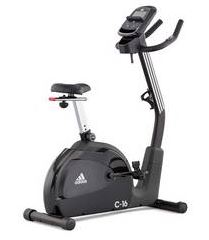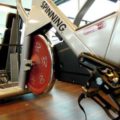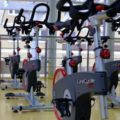If you need some help or tips with the adjusting of your Exercise Bike Resistance, then please make sure to take a quick look through the videos provided below.
Video - How to Adjust Exercise Bike Resistance
Types of Tension Resistance on Exercise Bikes
Exercise bikes are a popular type of fitness equipment that are designed to help people improve their cardiovascular health, build endurance, and burn calories. When using an exercise bike, the resistance of the pedals can be adjusted to provide a more challenging workout. There are several different types of tension resistance that can be found on exercise bikes, including some of the types outlined below…
View also: Recommended Exercise Bikes here
Magnetic Resistance
Magnetic resistance is one of the most common types of tension resistance found on exercise bikes. It uses a magnetic field to create resistance on the pedals, which can be adjusted using a knob or button on the bike's console. This type of resistance is quiet and smooth, and it allows for precise adjustments to the level of resistance.
Fan Resistance
Fan resistance works by using a fan to create resistance on the pedals. As the pedals turn, the fan blades create wind resistance, which makes it harder to pedal. Fan resistance bikes are typically more affordable than magnetic resistance bikes, but they can be quite noisy and may not offer as much control over the level of resistance.
Direct Contact Resistance
Direct contact resistance is a type of tension resistance that uses a felt pad to create friction on the flywheel. This type of resistance is common on older or more basic exercise bikes, and it can be adjusted using a knob or lever. Direct contact resistance can be quite noisy and may wear out over time.
Electromagnetic Resistance
Electromagnetic resistance is similar to magnetic resistance, but it uses an electromagnetic field to create resistance on the pedals. This type of resistance is very precise and can be adjusted in small increments. However, electromagnetic resistance bikes can be quite expensive and may not be necessary for casual exercisers.
Fitness Goals
The type of tension resistance that is best for you will depend on your personal preferences and fitness goals. Magnetic resistance is a good all-around option that offers smooth, quiet resistance, while fan resistance may be a good choice if you're looking for a more affordable option. Direct contact resistance is less common but can still provide a challenging workout, while electromagnetic resistance is a high-tech option that may be best suited for serious athletes or fitness enthusiasts.
View also: Best Exercise Bikes here
Video - How to Adjust a Recumbent Exercise Bike
How to Adjust Tension Levels on Exercise Bikes
Adjusting the tension levels on an exercise bike is an essential aspect of getting the most out of your workout. It allows you to customize the resistance to your fitness level and workout goals, whether you want to build strength, endurance, or burn calories so here are the basic steps for adjusting tension levels on an exercise bike
Determine the Type of Tension
Before adjusting the tension, you need to determine what type of tension your bike has. Most exercise bikes have either magnetic, fan, or direct contact resistance. Each type of resistance may have a different way of adjusting the tension, so refer to your bike's user manual for specific instructions.
Locate the Tension Adjustment
Once you know what type of resistance your bike has, locate the tension adjustment. Typically, it will be a knob or lever near the handlebars or console. Some bikes may have digital controls that allow you to adjust the tension using buttons.
Adjust the Tension
To adjust the tension, turn the knob or lever clockwise to increase the resistance or counter clockwise to decrease it. Depending on the bike, you may be able to make small incremental adjustments or larger ones. You should feel the difference in resistance as you pedal. Keep in mind that it's important to adjust the tension gradually to avoid injury or strain.
Test the Tension
After adjusting the tension, test it by pedalling for a few minutes. If the resistance feels too easy or too hard, make further adjustments as needed. Ideally, the resistance should challenge you but still allow you to maintain good form and pedal smoothly.
Monitor your Progress
As you use the exercise bike, monitor your progress and adjust the tension accordingly. Over time, you may be able to increase the resistance to continue challenging yourself and achieving your fitness goals. Whether you're a beginner or an experienced cyclist, customizing the resistance to your fitness level and goals can help you achieve better results and stay motivated in the long term for you

Flywheel Weights on Exercise Bikes
Flywheel weight is an essential feature to consider when choosing an exercise bike. It refers to the weight of the metal disk located at the front of the bike that spins as you pedal. The weight of the flywheel affects the smoothness of the ride, the resistance levels, and the overall feel of the bike so here's what you need to know about flywheel weights on exercise bikes…
How it Works
The flywheel is connected to the pedals through a chain or belt. When you pedal, the flywheel spins, generating resistance that makes it harder to pedal. The weight of the flywheel affects how much resistance is generated, and how smoothly the pedals spin.
Flywheel Weight Range
Flywheel weights can vary from as little as 3 lbs to as much as 50 lbs or more. Most high-quality exercise bikes have flywheel weights between 18 and 30 lbs, which provide a smooth, stable ride.
Heavy Flywheels
Exercise bikes with heavy flywheels typically provide more resistance and a smoother ride. Heavy flywheels require more effort to get moving, but once they do, they create a consistent and challenging workout. They're also less likely to wobble or vibrate, which can be distracting or uncomfortable.
Light Flywheels
Exercise bikes with lighter flywheels are usually more affordable and compact. They're ideal for beginners or people who prefer a less challenging workout. However, light flywheels may not provide enough resistance for more experienced cyclists or athletes.
Personal Preference
The weight of the flywheel is a matter of personal preference and depends on your fitness level, workout goals, and riding style. It's important to test different flywheel weights and choose the one that feels most comfortable and challenging for you.
Most Comfortable
Flywheel weight is an important factor to consider when choosing an exercise bike. A heavier flywheel typically provides a smoother ride and more resistance, while a lighter flywheel is more affordable and compact. Ultimately, the best flywheel weight is the one that feels most comfortable and challenging for your fitness level and workout goals.
View also: Popular Exercise Bikes here
Community Feedback
What recommendations do you have when it comes to adjusting the tension levels on an exercise bike and choosing the correct Flywheel weights? If possible, please share your own tips or opinions by leaving a comment in the comment box section provided below – so that others in the wider community can learn also









Recent Comments